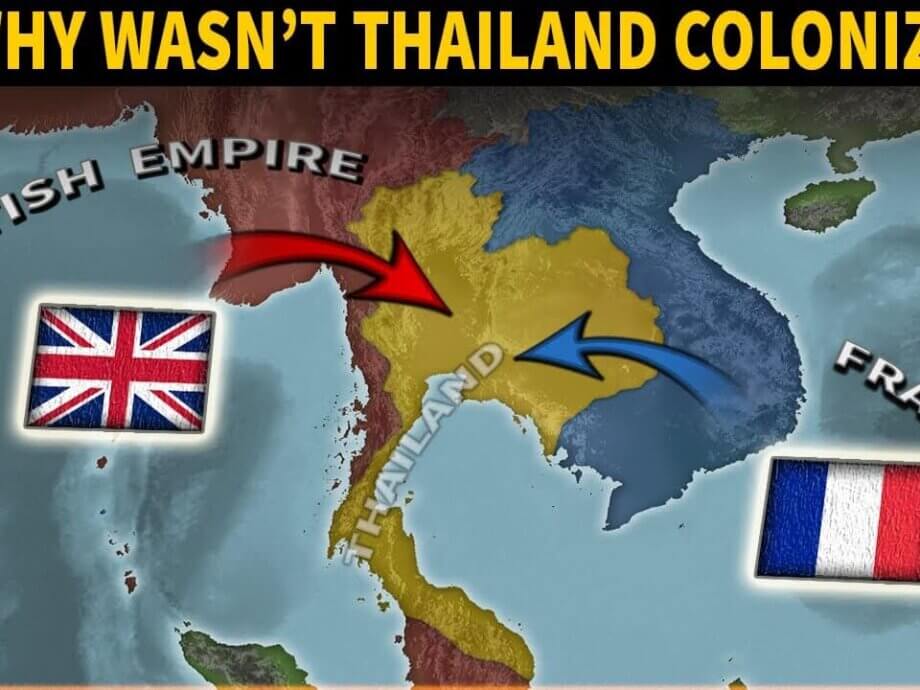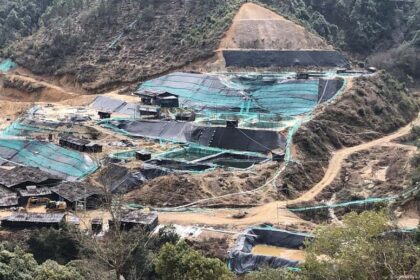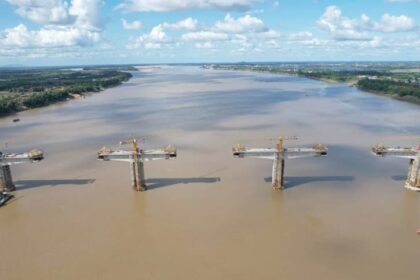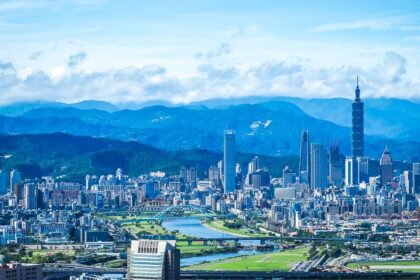Thailand’s Unique Path: The Only Southeast Asian Nation Never Colonized
In the heart of Southeast Asia, Thailand stands out as a remarkable exception to a regional history dominated by European colonialism. While neighboring countries like Vietnam, Cambodia, Laos, Myanmar (Burma), and Malaysia were absorbed into the empires of France and Britain, Thailand (formerly Siam) managed to retain its sovereignty. This achievement is not only a source of national pride but also a testament to the country’s strategic diplomacy, modernization efforts, and the astute leadership of its monarchs. Understanding how Thailand avoided colonization offers valuable insights into the interplay of geography, politics, and international relations in a rapidly changing world.
- Thailand’s Unique Path: The Only Southeast Asian Nation Never Colonized
- Colonial Encirclement: The Geopolitical Challenge
- The Role of Leadership: King Mongkut and King Chulalongkorn
- Diplomacy and Concessions: Navigating Colonial Pressures
- Modernization and National Identity: Building a Resilient State
- Comparative Perspective: Why Thailand’s Story Is Unique
- Modern Implications: Thailand’s Ongoing Balancing Act
- In Summary
Colonial Encirclement: The Geopolitical Challenge
By the late 19th century, European powers had carved up much of Asia and Africa. The British controlled Burma and Malaya, while the French dominated Indochina (Vietnam, Cambodia, and Laos). Thailand found itself sandwiched between these two expanding empires, making its independence seem precarious. The region’s geography, however, played a crucial role. Thailand’s position as a buffer state between British and French territories gave it unique leverage. Neither colonial power wanted the other to gain a strategic advantage by annexing Siam, so both had an interest in maintaining its independence as a neutral zone.
This buffer state status was not a passive accident of geography. Thai rulers recognized their country’s vulnerability and actively used their position to negotiate with both sides, playing them off against each other to preserve sovereignty.
The Role of Leadership: King Mongkut and King Chulalongkorn
Thailand’s survival as an independent nation is closely tied to the vision and skill of its monarchs, particularly King Mongkut (Rama IV, reigned 1851–1868) and his son King Chulalongkorn (Rama V, reigned 1868–1910). These kings understood the threat posed by European imperialism and responded with a combination of diplomacy, modernization, and strategic concessions.
King Mongkut: Opening to the West
King Mongkut initiated a policy of engagement with Western powers, signing treaties that opened Siam to foreign trade and influence. While these agreements often favored European interests, they also bought time and established Siam as a recognized player in international diplomacy. Mongkut’s willingness to adapt and negotiate set the stage for his son’s more ambitious reforms.
King Chulalongkorn: The Architect of Modern Thailand
King Chulalongkorn is celebrated in Thailand as the monarch who truly modernized the country and safeguarded its independence. His reign saw sweeping reforms:
- Abolition of slavery in 1905, which helped modernize society and align Siam with Western values.
- Modernization of the legal and administrative systems, including the creation of a centralized bureaucracy and the introduction of Western-style laws.
- Infrastructure development, such as building railways, telegraphs, and modern roads.
- Educational reforms, including the establishment of schools and sending students abroad to learn from Western institutions.
These changes were not merely cosmetic. They demonstrated to European powers that Siam was a “civilized” nation capable of self-governance, making it less justifiable as a target for colonization. As Dr. Charnvit Kasetsiri, a prominent Thai historian, notes:
“King Chulalongkorn’s reign marked a pivotal moment in Thai history. His reforms laid the groundwork for Thailand’s emergence as a modern nation-state, while preserving its cultural identity and independence.”
Diplomacy and Concessions: Navigating Colonial Pressures
Diplomacy was at the heart of Thailand’s survival strategy. The country’s leaders skillfully negotiated with both Britain and France, making calculated concessions to avoid outright colonization. For example, in 1893, after a confrontation with France, Siam ceded control of Laos and parts of Cambodia to the French in exchange for retaining the core of its territory. Similarly, in 1909, Siam transferred control of several Malay states to Britain.
These territorial losses were painful, but they were seen as necessary sacrifices to preserve the nation’s independence. The alternative—total colonization—would have meant the loss of sovereignty and the imposition of foreign rule. By yielding peripheral territories, Siam’s rulers protected the heartland and maintained their autonomy.
The Buffer State Strategy
Thailand’s role as a buffer state was formalized in agreements between Britain and France. In 1896, the two colonial powers agreed not to send troops into the region between the Mekong River and the Tenasserim Mountains without mutual consent, effectively recognizing Siam’s independence as a neutral zone. While this did not guarantee absolute security, it reduced the risk of unilateral annexation by either power.
International Recognition and Treaties
Thailand also sought international recognition of its sovereignty through treaties with other Western nations, including the United States and various European countries. These agreements established diplomatic relations and further legitimized Siam’s status as an independent state in the eyes of the world.
Modernization and National Identity: Building a Resilient State
Modernization was not limited to infrastructure and administration. Thai leaders understood the importance of fostering a strong national identity to resist foreign influence. They promoted the Thai language, centralized power in Bangkok, and emphasized Theravada Buddhism as a unifying force. By consolidating authority and cultivating a sense of national unity, the monarchy strengthened the country’s ability to withstand external pressures.
Education played a key role in this process. King Chulalongkorn established Thailand’s first university, Chulalongkorn University, and encouraged the study of Western sciences and languages. This investment in human capital helped create a new generation of leaders capable of navigating the complexities of international politics.
The Abolition of Slavery
One of the most significant reforms was the gradual abolition of slavery, culminating in 1905. This move not only modernized Thai society but also improved the country’s image abroad. As Dr. Suchatvee Suwansawat, President of Chulalongkorn University, reflects:
“King Chulalongkorn’s commitment to education was revolutionary for his time. He understood that knowledge was power, and that empowering his people through education was the key to national development.”
Preserving Cultural Identity
While embracing modernization, Thailand’s rulers were careful to preserve the country’s cultural heritage. They promoted traditional practices, rituals, and the Thai language, ensuring that modernization did not come at the expense of national identity. This balance between adaptation and preservation was crucial in maintaining social cohesion and resisting foreign domination.
Comparative Perspective: Why Thailand’s Story Is Unique
Thailand’s ability to avoid colonization is exceptional not only in Southeast Asia but globally. Other countries that managed to remain uncolonized, such as Ethiopia, Japan, Nepal, and Bhutan, did so through a mix of military resistance, geographic isolation, and diplomatic skill. In Southeast Asia, however, Thailand’s case is singular. As Pulse Nigeria and other sources note, Thailand is the only country in the region never to have been colonized by a European power.
This distinction has had lasting consequences. While many former colonies struggled with the legacies of foreign rule—such as extractive institutions, economic dependency, and social divisions—Thailand was able to chart its own course. According to research from the Centre for Economic Policy Research (CEPR), colonialism played a major role in shaping global inequality, with countries that avoided colonization often enjoying more stable and inclusive institutions.
Regional Context: Lessons from Neighbors
The fate of Thailand’s neighbors underscores the significance of its achievement. Burma (Myanmar) fought three wars against the British and lost its monarchy, becoming a British colony. Vietnam, Cambodia, and Laos were absorbed into French Indochina after military defeat and diplomatic pressure. These countries endured decades of foreign rule, with profound impacts on their political, economic, and social systems.
Thailand’s pragmatic approach—combining diplomacy, modernization, and strategic concessions—enabled it to avoid the violence and upheaval that accompanied colonization elsewhere in the region.
Modern Implications: Thailand’s Ongoing Balancing Act
Thailand’s tradition of diplomatic balancing did not end with the colonial era. In the 20th and 21st centuries, the country has continued to navigate the competing interests of major powers, including the United States, China, and Japan. During World War II, Thailand allied with Japan, but after the war, it became a key U.S. ally during the Cold War. Today, Thailand maintains close economic and political ties with both China and the United States, leveraging its strategic location and economic strength to preserve its independence.
Managing Great Power Influence
As China’s influence in Southeast Asia grows, Thailand faces new challenges. Chinese investment, trade, and cultural outreach have increased dramatically, but Thai leaders remain wary of becoming overly dependent on any single partner. The country has diversified its international relationships, attracting investment from Japan, the U.S., and Europe, and playing an active role in regional organizations like ASEAN.
Thailand’s approach has been likened to bamboo in the wind—flexible and adaptive, yet firmly rooted. This strategy allows the country to benefit from engagement with multiple powers while safeguarding its sovereignty. As Sebastian Strangio, a regional analyst, observes:
“Despite the growing Sino-Thai relationship, Thailand remains willing and able to push back against anything perceived to compromise Thai sovereignty.”
Contemporary Challenges
Thailand’s success in avoiding colonization has not insulated it from internal challenges. The country has experienced periods of political instability, military coups, and social unrest. However, its ability to adapt and maintain a degree of national unity has helped it weather these storms. The legacy of independence continues to shape Thai identity and politics, serving as a touchstone for debates about the country’s future direction.
In Summary
- Thailand is the only Southeast Asian country never colonized by a European power, a distinction achieved through strategic diplomacy, modernization, and calculated concessions.
- Geography played a key role, with Thailand serving as a buffer state between British and French colonial empires.
- Visionary monarchs, especially King Mongkut and King Chulalongkorn, implemented reforms that modernized the country and strengthened its institutions.
- Diplomatic negotiations and territorial concessions allowed Thailand to preserve its core sovereignty while avoiding direct conflict with colonial powers.
- Modernization efforts included the abolition of slavery, legal and administrative reforms, infrastructure development, and investment in education.
- Thailand’s experience contrasts sharply with its neighbors, who endured decades of colonial rule and its lasting consequences.
- The country’s tradition of balancing great power interests continues today, as Thailand navigates relationships with China, the United States, and other global players.
- Thailand’s story is a testament to the power of pragmatic leadership, adaptability, and national unity in safeguarding independence.












